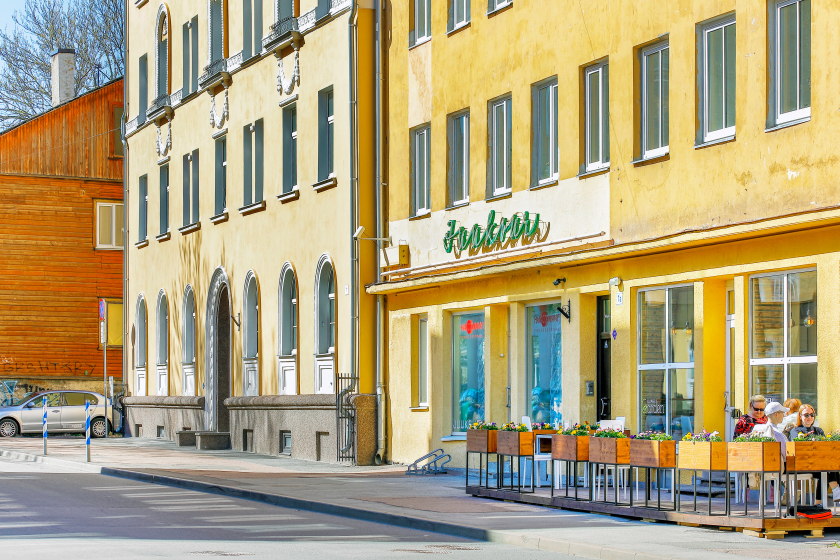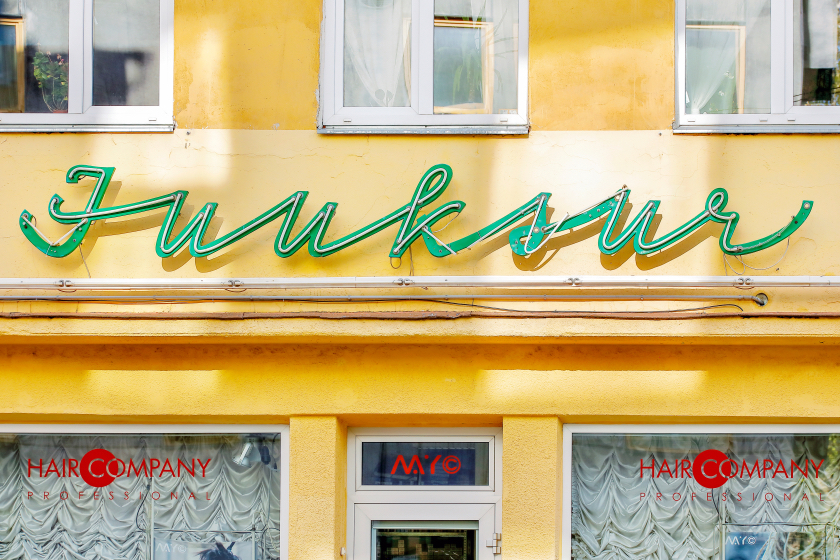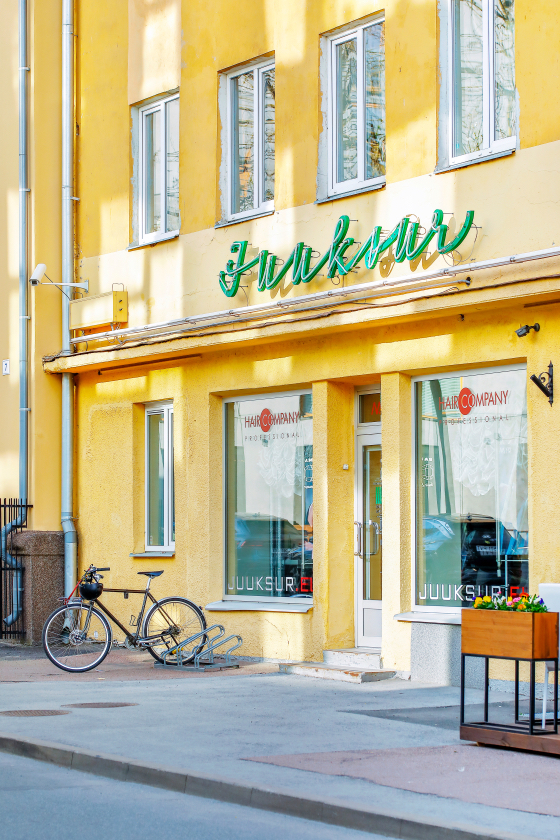Luminescent script Juuksur (hairdressing) in Vana-Kalamaja Street
In the first half of 20th century it was discovered that gas inserted into a glass tube became luminescent under the impact of electrical impulse. Neon provided orange, hydrogen red, helium yellow and carbon dioxide white shade. This was started to use for making advertising scripts on the facades of buildings. As electrodes were located in the ends of the glass tube, it was technologically favourable to use solutions resembling a handwriting. Luminescent advertisements resembling brush script were especially popular in Germany.
There were few advertisements in the Soviet period, but neon signs could still be seen in the city. Typically for the period, these were used to indicate general name of a service establishment, such as “canteen”, “food products” or “hairdressing”. The neon script in Vana-Kalamaja Street is one of these – and one of the few still preserved in Tallinn. As LED light is much cheaper to produce and maintain, the original neon signs are constantly disappearing.




